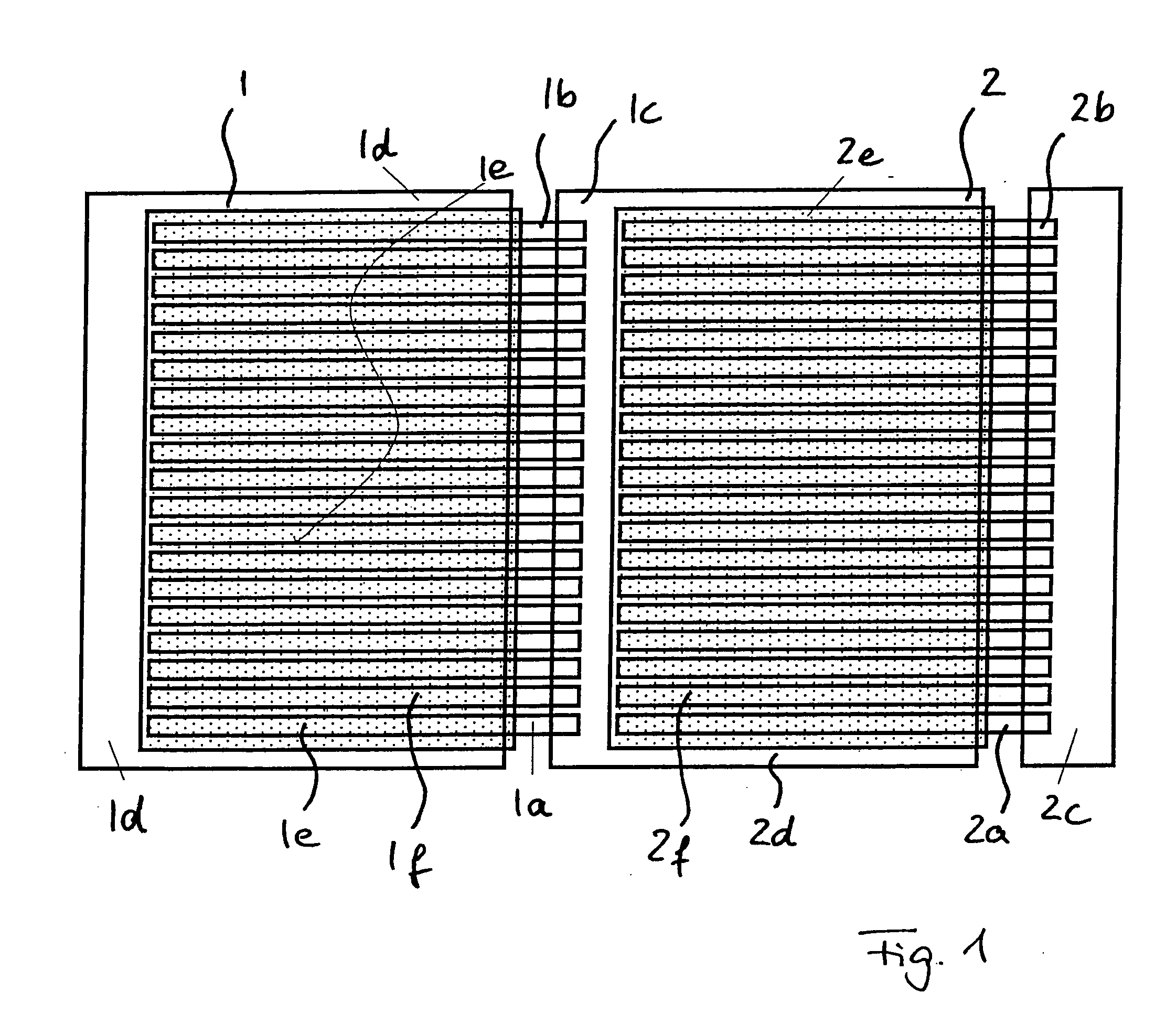Organisches Leuchtbauelement
- Summary
- Abstract
- Description
- Claims
- Application Information
AI Technical Summary
Benefits of technology
Problems solved by technology
Method used
Image
Examples
Embodiment Construction
[0045]The invention is explained in greater detail below with reference to preferred exemplary embodiments, with reference to a drawing, which shows the following:
[0046]FIG. 1 shows a schematic illustration of an organic lighting component having two lighting elements electrically connected in series; and
[0047]FIG. 2 shows an enlarged illustration of a section of the organic lighting component according to FIG. 1.
[0048]FIG. 1 shows a schematic illustration of an organic lighting component having two lighting elements 1, 2 electrically connected in series. Each of the two lighting elements 1, 2 has an electrode 1a, 2a which is provided as a configuration of multiple strip-shaped partial electrodes 1b, 2b extending in parallel. The partial electrodes 1b, 2b are each connected to a contact connection 1c, 2c, and are thus electrically connected in parallel. In addition, the two lighting elements 1, 2 each have a counterelectrode 1d, 2d which is provided as a flat electrode. In one simpl...
PUM
 Login to View More
Login to View More Abstract
Description
Claims
Application Information
 Login to View More
Login to View More - R&D
- Intellectual Property
- Life Sciences
- Materials
- Tech Scout
- Unparalleled Data Quality
- Higher Quality Content
- 60% Fewer Hallucinations
Browse by: Latest US Patents, China's latest patents, Technical Efficacy Thesaurus, Application Domain, Technology Topic, Popular Technical Reports.
© 2025 PatSnap. All rights reserved.Legal|Privacy policy|Modern Slavery Act Transparency Statement|Sitemap|About US| Contact US: help@patsnap.com


